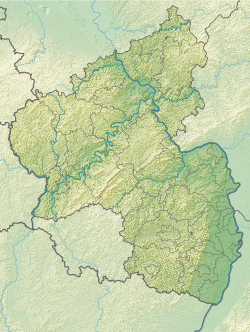This article has multiple issues. Please help improve it or discuss these issues on the talk page . (Learn how and when to remove these messages)
|
| UNESCO World Heritage Site | |
|---|---|
 | |
| Location | Trier, Rhineland-Palatinate, Germany |
| Part of | Roman Monuments, Cathedral of St Peter and Church of Our Lady in Trier |
| Criteria | Cultural: (i), (iii), (iv), (vi) |
| Reference | 367-006 |
| Inscription | 1986 (10th Session) |
| Coordinates | 49°44′59″N6°38′32″E / 49.749729°N 6.642259°E |
The Trier Imperial Baths (German: Kaiserthermen) are a large Roman bath complex in Trier, Germany. The complex was constructed in the early 4th century AD, during the reign of Constantine I. During that time, Trier was a major imperial hub, being a primary residence for Constantine's son Crispus. The baths were built around hot water pools reaching 40°C. [1] Underneath the complex was a network of underground passageways used by the staff which can still be seen today, along with the remains of the sewer system. [1] However, the baths were never completed and were made into a castle in the Middle Ages. [2]
















